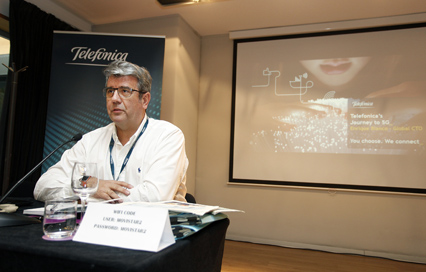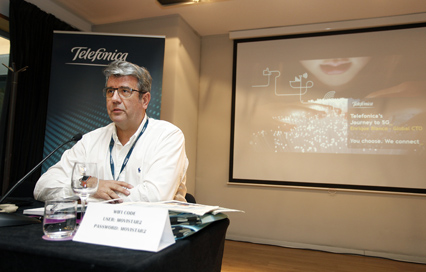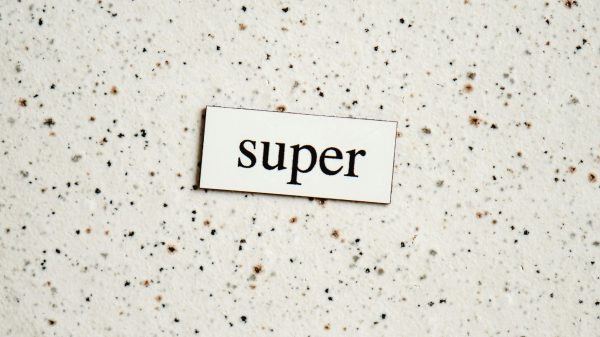– One of the first operators outside Korea to demonstrate “LTE-Advanced 3 band carrier aggregation (3CA)” running in a commercial network with Ericsson’s equipment and ready to market Samsung Galaxy Note 4, Category 9 devices.
– A first at a large event, Telefónica will also show its LTE-A (2CA) commercial network perfectly integrated with the most advanced indoor system (RDS). A combination which remarkably improves quality and indoor coverage.
– Finally, as an active contributor to the research underway working towards the definition of 5G, Telefónica also shows Full-Duplex, a technology with the potential to revolutionise wireless communications.
Barcelona, 1 March 2015. – Telefónica today unveils a remarkable proof point of LTE Advanced 3 band carrier aggregation over a live network. Carrier Aggregation is currently the most important technology feature for LTE network evolution because it improves customer experience, simplifies traffic management and extends the coverage area.
At this year´s MWC, Telefónica is using Ericsson network equipment and all of its available spectrum to combine 3 component carriers (20MHz in 2600+20MHz in 1800 +10MHz in 800) to demonstrate speeds of up to 375 Mbps downlink and 50Mbps uplink in two different Hot-Spots in Barcelona: its booth (Hall 3-3J20) and a space allocated in a central hotel.
The commercial network is supported by the LTE Advanced Tri-Band Carrier Aggregation enabled Samsung Galaxy Note 4, one of the first Category 9 devices ready for the market. The company expects to commercially launch the service – pending availability of spectrum and compatible commercial devices in the market.
In Spain, Telefónica is actively working on completing installations and pushing forward ongoing efforts to deliver LTE in the 800 MHz frequency band and in this way be able to fully launch the service as quickly as possible. For Telefónica deploying LTE in 800 MHz band is the very foundation for widespread delivery of advanced 4G services in 2015.
Telefónica already offers LTE-Advanced services based on dual carrier aggregation in Madrid and Barcelona, and will launch them in the most important cities of Spain during this year. MWC visitors using commercial Cat 6 devices without speed limitations on their SIM Profiles can enjoy this network functionality, consisting of a dedicated bandwidth of 30 MHz LTE (2600 MHz (20MHz) + 1800 MHz (10 MHz), and will be able to reach speeds of up to 225 Mbps[1] in downtown Barcelona.
Carrier Aggregation’s carries real customer benefits
Carrier aggregation paves the way for much faster data speeds and increased capacity for every customer. By combining different bands of spectrum, data can travel faster through more channels. This increases data rates per user and reduces network latency (response time) compared to conventional LTE networks.
Carrier Aggregation allows the network to distribute resources more evenly as it balances traffic load intelligently and dynamically across multiple carriers. The improved networks consistently show high speeds across the whole cell and can also service many more users per cell. This will result in even faster downloads and higher quality video experiences on Category 6 & 9 enabled mobiles and tablets as they become available.
“Telefónica is making fast progress toward building a network designed with the future in mind. Carrier aggregation represents one of the most efficient ways to leverage our spectrum, increase capacity and substantially enhance Quality of Service”, said Enrique Blanco, CTO Telefónica.
Superior Indoor Coverage: Carrier Aggregation plus Radio Dot Systems
A complementary step to Carrier Aggregation is to combine it with superior indoor coverage. For the first time at a large event, visitors will see Ericsson’s Radio Dot Systems perfectly integrated in a commercial LTE-A network (2CA) being shown at a centric Hotel in Barcelona as well as at Ericsson’s Booth.
By adding these indoor solutions to the LTE Advanced networks, Telefónica is able to deliver seamless coverage to consumer and business customers in the broadest range of in-building deployment scenarios, including high growth, medium-to-large buildings and the venue category.
We will demonstrate that DOTS perform significantly better than current indoor solutions, such as Distributed Antenna System (DAS). At a centric Hotel in Barcelona, RDS is outperforming existing DAS system both in radio quality and capacity/performance for similar coverage: 30% better DL throughput and more than 20 Mbps in UL for RDS in walk tests.
A taste of 5G
All these deployments are part of the journey to create a new Generation: 5G, expected to be commercially available from 2020. Telefónica is an active contributor to the work being carried out by research and industry standard bodies[2] to better define this future technology.
As part of this active role, Telefónica brings to its booth, in collaboration with Kumu Networks, an innovative full-duplex demo. Full-Duplex is a technology that cancels self-interference, the









